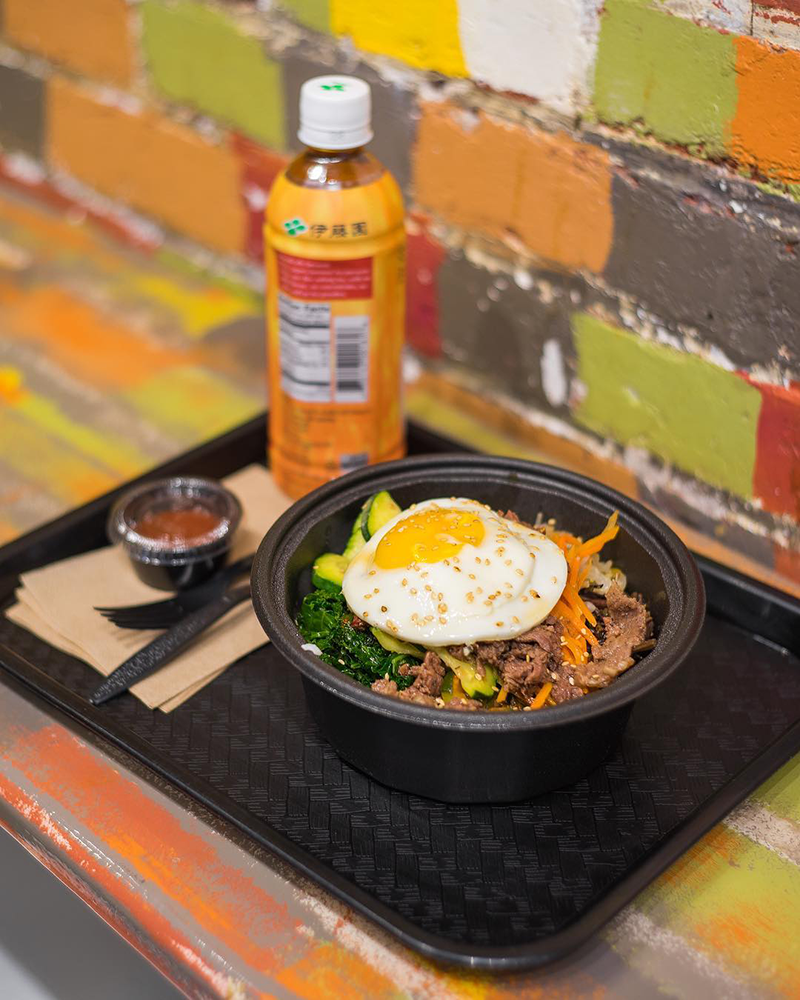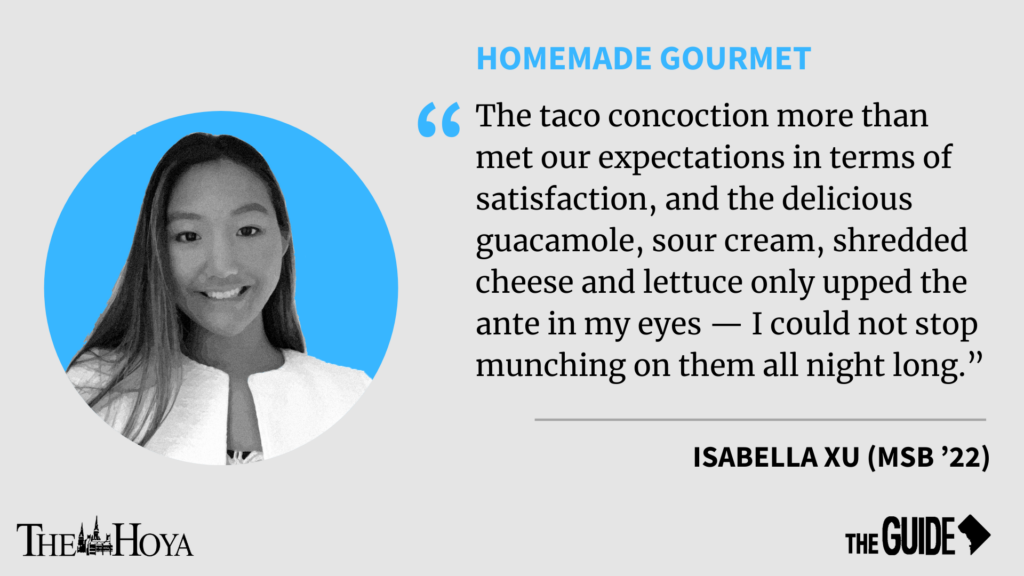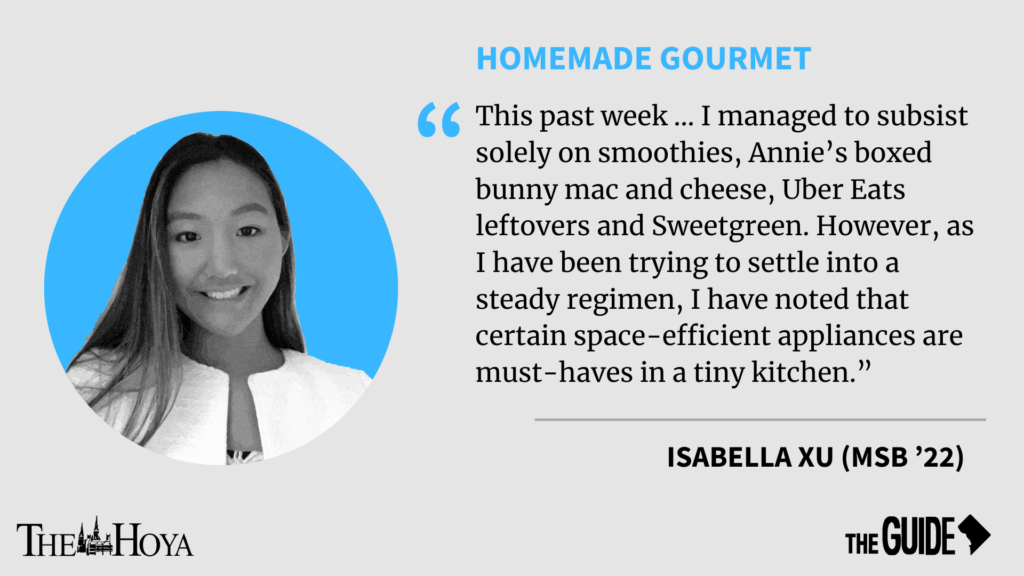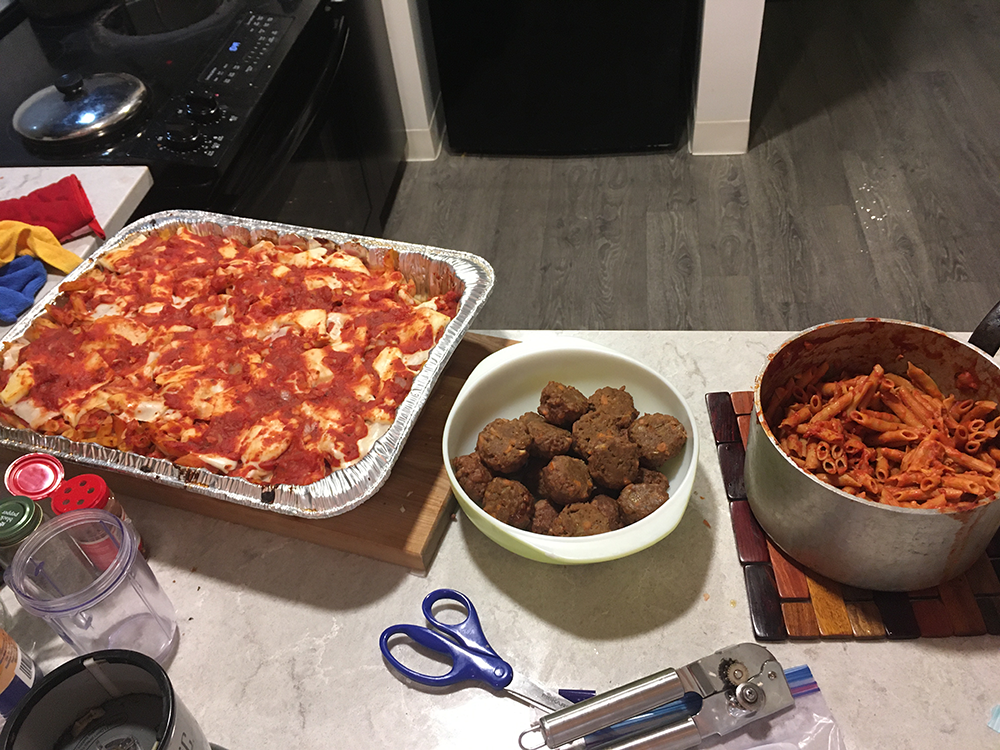When Fatima Marquez (COL ’22) finished her $16 seafood enchiladas at Los Cuates, she had one thing to say of the hearty dish: “It needs more spice.”
Used to devouring spice-filled meals at home, Marquez was underwhelmed by the flavor but not completely unsatisfied with the experience of her exploration of Mexican cuisine options near campus. Something about the environment struck her as familiar and welcoming, in spite of a few culinary shortcomings.
Washington, D.C. is one of the most diverse cities in the United States as well as the most exciting food city in the United States, according to Bloomberg in 2019. As D.C.’s restaurant saturation and sales continue to grow, residents of the District see some of that diversity take hold in the wide array of available international dining options.
For Marquez and other Georgetown University students, the dense D.C. food scene offers an opportunity to seek out the familiar tastes of their own culture — whether authentic and traditional or creative and modern — and explore the different flavors other cultures have to offer.
Variable Authenticity
In terms of taste, some things will never be the same as they are at home, according to Marquez.
“Usually most Mexican restaurants in America are too bland and do not use enough spice at all. Everything I eat in Mexico is way more spicy,” Marquez said in an interview with The Hoya. “I think that’s just American restaurants trying to cater to a lot of different tastes, because I think a lot of people would not be used to that amount of spice,” Marquez said.
While the abundance of cultural restaurants in the District can offer convenient samples of ethnic cuisine, at times these cultural identifications generalize the vast culinary variety of a particular country, according to Anjali Britto (SFS ’22). Finding food that truly encompasses the culinary diversity of any one country or region like Goa can be difficult, Britto wrote in a message to The Hoya.
“One sad thing is that the food from the specific part of India that I’m from, I can never find here, mostly because when it comes to Indian food, there is a very specific image people have of the type of cuisine and the type of dishes that fit into the idea of ‘Indian cuisine,’” Britto wrote. “In reality, Indian food is made up of thousands of cuisines from different parts of the sub-continent, and differs from region to region but also between communities and families. So the specific food that I love when I’m home, I can’t find here.”
Catering to American tastes or creating fusion options can sacrifice authenticity, which creates difficulties when looking for authentic Korean food, according to Karina Han (NHS ’23). Han lives nearby, and though she spends many weekends enjoying home-cooked Korean meals, when she is on campus she partakes in D.C. dining experiences that play off of those traditional meals. Dupont Circle spot Triple B Fresh is a creative take on Korean-inspired food as a counter service restaurant offering customizable rice bowls and healthy substitutes for traditional dishes, but one that is not so representative of Korean cuisine, according to Han.
“I think D.C. tries to grow its global food scene, especially to go along with the trends,” Han said in an interview with The Hoya. “This is a new type of experience — it’s almost like Chipotle where you can pick what you want in your Bibimbap, but it’s not the most authentic. It’s either too sweet or too salty and definitely Americanized.”

A Washington Post interview of Krishnendu Ray, the chair of nutrition and food studies at New York University and author of “The Ethnic Restaurateur,” examined people’s of cultures in relation to their food, especially the way cultural or “ethnic” food is prepared in the United States. The fact that Americans are unwilling to pay more money for better quality ingredients and labor results in one-dimensional views of cultural food as spicy and greasy, according to Ray.
“It’s the fact that we are not willing to pay the same price to get the same level of quality. And frankly, that’s why you get so much crappy foreign food in the United States,” Ray said in an interview with The Washington Post. “Here in the United States, when you buy ‘ethnic food,’ you’re essentially buying it from people who learn to cook it on the fly, mostly men, who have often never cooked back home. What ends up happening is they hide technical deficiencies behind salt, butter, and fat.”
Americanization and oversimplification of familiar dishes is an unfortunate reality, according to Britto.
“The popularly known ‘Indian’ dishes, there’s no shortage,” Britto wrote. “No one does spice the way Indians do,” Britto wrote.
Familiar Experiences
The District’s cultural dining options are much more than hit-or-miss attempts to recreate international cuisines. Some students see the experience of going out to eat familiar food as an opportunity to channel their culture in other ways and also to bring a piece of that culture to their friends.
Marquez looks for ways to stay connected to her Mexican American identity. After leaving a large Mexican American community in her hometown in Illinois, she wanted to engage with the sights and sounds familiar to her, according to Marquez.
“I look for Mexican restaurants in D.C. and in Georgetown like Los Cuates. They’re not perfect — I know it would taste much better at home or in Mexico — but I still like the environment of those restaurants,” Marquez said in an interview with The Hoya. “They play Mexican music that I usually hear at parties back home like ‘El Sonidito,’ and I like their decorations.”
At Los Cuates, some of the vibrant decorations Marquez adores include rainbow-colored ponchos framing the windows and strings of Mexican flags lining the walls. Being in an environment that reminds her of home sets going out to eat apart from other experiences, according to Marquez.
“It’s nice when I can order in Spanish, which is my first language. I miss being around that environment sometimes. Even though I do try a lot of different types of food and a lot of different cultural foods, it feels different to go to a Mexican restaurant,” Marquez said. “Not necessarily because the taste reminds me of home. Like I could also go get a burrito at 7-Eleven or Wawa that would taste about as Mexican as some Mexican restaurants in D.C. But I still choose to try Mexican restaurants because of the environment.”
Spending time experimenting with restaurants in the Georgetown neighborhood allows Han to share hints of her culture with her friends. She has tried numerous Korean spots in D.C. and finds each experience offers its own modern adaptations to a traditional meal, whether through artistic and hip interior design choices or creative brunch and late night options. As she experiences the various sides of Korean dining, she also introduces her friends to a little bit of home. BUL, for example, is a restaurant that masters Korean comfort food in a sleek setting and one she recommends to friends, according to Han.
“BUL is essential for a complete immersion into more aspects of the Korean dining experience,” Han said.
Mandu is another restaurant Han frequents whose extensive menu, cozy environment and excellent service facilitate a memorable Korean meal, according to Han.
Though looking for ways to emulate home is valuable to some students, Britto keeps her expectations realistic when she is craving Indian cuisine and looking for convenient ways to obtain it. The saturation of restaurants in D.C. may be high at 332.2 restaurants per 100,000 people, but while that number speaks to an abundance of eateries, it does not speak to their quality. She is not trying to compare it to what she would be able to find at her home in Mumbai, according to Britto.
“I know what Indian food I like and I know where to get it, and if I can’t, it’s always going to be there back home,” Britto wrote in a message to The Hoya.
The abundance of casual Indian restaurants in the area, however, is good for convenience if not always for authenticity, according to Britto.
“I’m pretty lucky when it comes to food that reminds me of home because Indian food is enough of a cultural presence here for me to be able to find a lot of Indian food fairly easily,” Britto wrote. “If I’m on my own with friends, it’s usually Curry and Pie. Honestly, it’s kinda nice having a restaurant so close and not that expensive, so if I’m ever craving a solid Indian meal I can just zip across. It’s not the best, obviously, but for how convenient it is, my friends and I enjoy it a lot.”
Seeking out foods that channel her culture offer more than just familiar tastes that harken back to home, according to Britto.
“To me, having food that reminds me of home is incredibly valuable because it’s not just the food itself, it’s the feeling of not being as far from home as you actually are,” Britto wrote.
Making Use of an International City
With Embassy Row and cultural community centers in its radius, Georgetown’s location in a city filled with international presences provides an opportunity to connect with global experiences, according to Matthew Carvalho (NHS ’23). Carvalho is a member of the International Club of D.C., an organization dedicated to creating cultural immersion opportunities with museum and embassy visits.
“I get to step into almost every country around the world without even leaving the District. What other city can you experience that in?” Carvalho said in an interview with The Hoya.
Typical International Club of D.C. events include cooking classes, meals hosted by ambassadors and tasting events, Carvalho said.
“I never imagined being able to taste the world while in college. The opportunity to sample imported chocolates and traditional dishes with ambassadors is once in a lifetime,” Carvalho said.
Opportunities to conveniently travel the world through food open up as new restaurants frequently open in Dupont Circle and Adams Morgan. The restaurant Truno on Embassy Row, which opened in January, offers a hodgepodge of plates from around the world, including Nigerian spicy suya skewers, Yucatan-style roasted lobster and Yemeni flatbreads. Its name is inspired by the Icelandic act of a Trúnó, the sharing of stories over food and drinks.
Trying dishes from other cultures can be an educational experience as people develop appreciation for cuisine that is new to them, according to a statement by GU Eating Society, an organization that facilitates food exploration and appreciation.
“There are few easier ways to connect with other cultures than to immerse yourself in them – and we do just that at our events! Whether it’s pollo con mole at Poca Madre or foie gras mi-cuit at Lutèce by Bonaparte, we try to embrace and educate ourselves on the many cultures in our world,” the GUES board members wrote in an email to The Hoya.
It is worth remembering that trying different cultural foods is not solely about the taste, according to Marquez.
“Of course the food is the focus, but it’s the experience, too, of just trying something that’s new to you and learning about other people in the process,” Marquez said.

















jesica taylor • Jan 26, 2021 at 6:38 am
Thanks for sharing the blog it is a very important and interesting topic in which peoples are receiving great information and very helpful.
cami • Jul 15, 2020 at 7:32 am
I have read your blog it’s really good